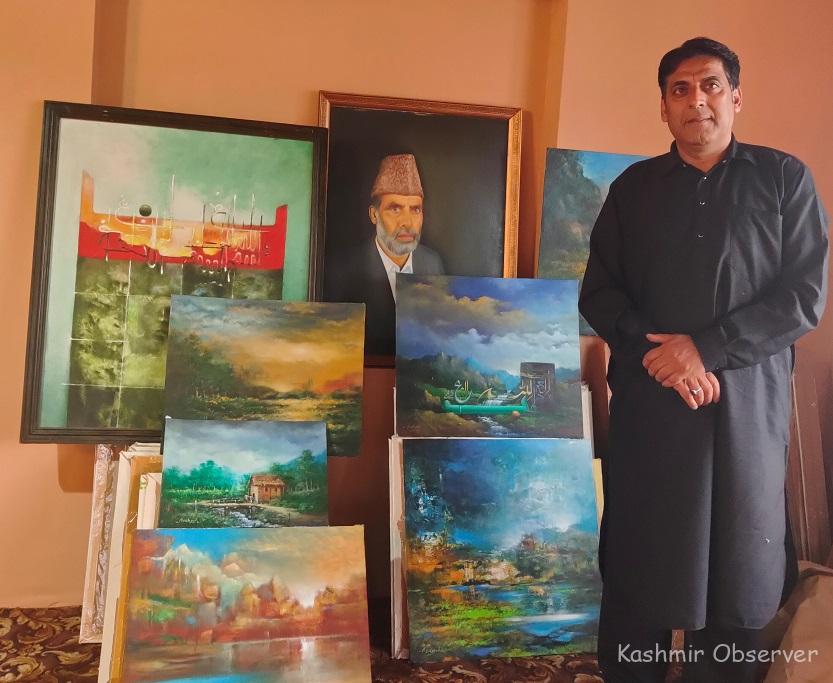
Arshad’s paintings are displayed all over European countries and USA. More than thirty of his original paintings and reproductions are at display in private collections there.
ARSHAD Sauleh is sitting on a traditional wood-carved sofa talking to a fellow artist from abroad. His portrait overlooks the room full of creative canvases. The man had his brushes with some top artists of the world, like Jatin Das and Jay Jarotiya, and yet he sounds humble and keeps a low profile.
Arshad who teaches Art in Srinagar’s Government College of Education recently took part in the Indo-Iran International Art and Calligraphy Competition held on the 43rd Anniversary of the Islamic Revolution where his artworks were awarded by the Iran Cultural House Mumbai.
“My art is my legacy as my father was an artist of high caliber,” the artist says.
His father was a Paper Mache artisan and had created more than three hundred designs and mentored more than 250 artisans in Kashmir.
Soon after his birth in Khankah locality of Srinagar in the year 1971, Arshad followed his father’s footsteps and became master of the art.
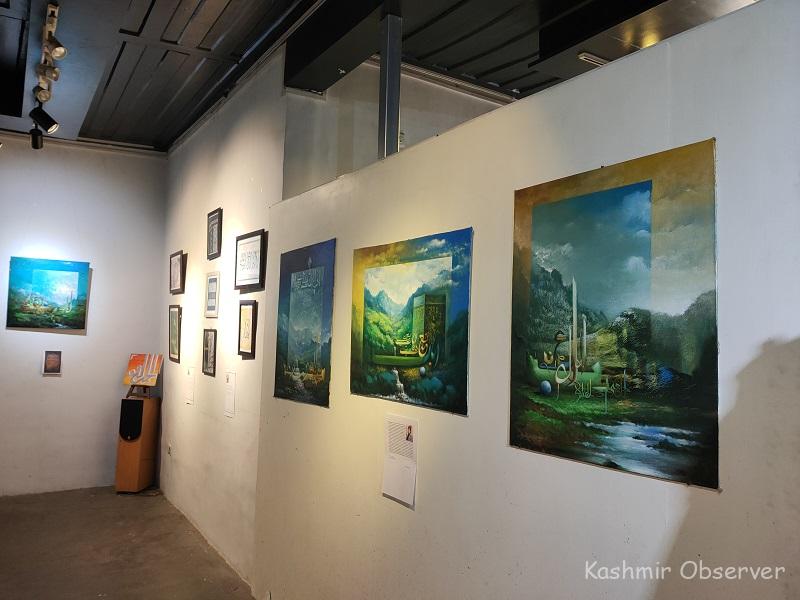
In his early childhood days, Arshad had realized that he had tendency towards drawing objects and paintings. “I was only five-year-old when I realized that I can paint or draw,” he recollects in his room full of art. “I used to sketch on every surface, be it a paper, wall or any other surface. I tried to sketch on everything possible.”
Drawing was an expression of his keen observation as well as an expression of his DNA. “My father had high-degree of aesthetic taste and aesthetic sensibility,” he remembers with a glint in his eyes. “He had realized that I had the talent to sketch and draw and he gave me freedom as I desired. I think there were instinctual forces within me which always forced me to paint and draw.”
As a self-taught artist in the beginning, he would draw landscape, portraits, figurative art, and symbolic landscape. His father did not leave any stone unturned and provided him with everything he needed to pursue his career.
“There was no dearth of painting material at our house because my father’s Papier Mache art workshop,” he says. “The tools only gave wings to my imagination.”
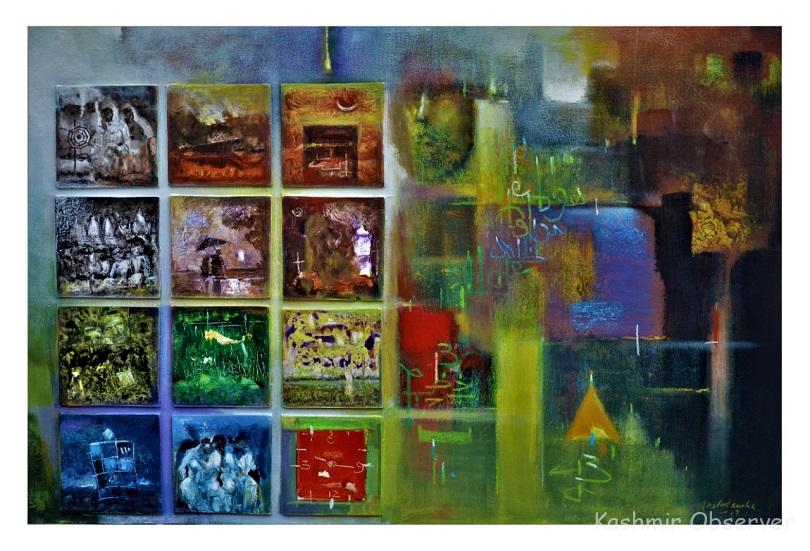
Back then, cloth merchants of his locality would throw their mound boards after selling the cloth. He used to pick up the white boards as it was a good surface to work on.
“Until then I was self-taught,” he says. “Later, I used to draw portraits using oil medium, acrylic medium and canvas paintings before joining the college.”
When he used to see signboard painters painting in enamel paint, he would get inspired to draw portraits. He remembers seeking answers from his teachers from Kashmir and abroad.
Having joined Institute of Music and Fine Arts in 1992, he does not shy away from remembering his tributes to his mentors and teachers.
“I was mentored by M. A. Mehboob and Shuja Sultan,” he recalls. “During those times our college was headed by valley’s prominent sculptor, late Gayoor Hassan.”
The college faculty appreciated his work and realized that he had interest and talent to opt for painting as a subject. “I had a choice to make between commercial art, sculpture, painting or arts,” Arshad says. “I took Painting.”

Arshad’s date with Calligraphy started after he saw an artwork at New Delhi’s Iranian Embassy in 1992 and drew inspiration from it. He calls it a turning point of his life.
“Although I was inspired by that art-piece, Calligraphy passed onto me from my grandfather,” he says. “He was a calligrapher of high repute and I realized it was in my genes.”
After working on some of his artworks he thought of doing something different and started doing calligraphic works in landscape paintings.
“I thought of instilling calligraphy in landscape paintings,” Arshad says. “I realized it was doable.”
Recalling his first calligraphic painting of circa 1992, he says, it was a Quranic calligraphy, with a verse: “Wama Arsalnaaka Illa Rehmatal Lil Aalameen.”
The Quranic calligraphy with landscape is something he never wants to give up.
Today, Arshad’s calligraphic paintings with verses from the Quran are in display in many European, Gulf and Central Asian countries.
“I’ve been successful in making this model of paintings successful,” he says. “It’s so popular that some people think that this is the only subject I work on. But I work on other subjects as well, such as realistic landscape, surrealistic landscape figurative paintings.”
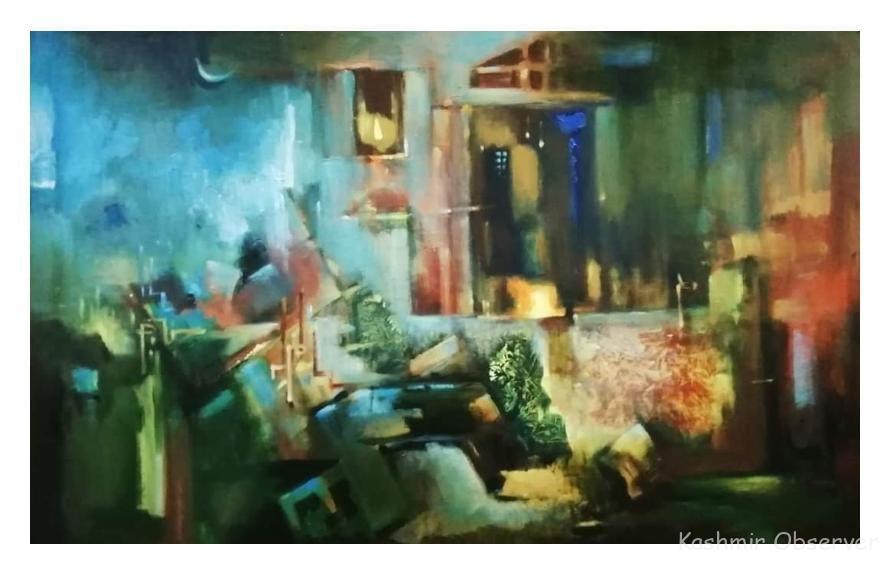
For his creative work, Arshad has been bestowed with the state award three times by the Cultural Academy. He has been honored by awards by N.N Vohra and S.S.Bhagat who was president of All India Fine Arts and Crafts Society, New Delhi.
“I was awarded National Award by Raskala Manch, Haryana and Masters of Award Honour by Artistry international at Jaipur,” he says.
On the International front, Arshad was selected for Tenth International Artists’ Exhibition in Tehran in 2002. “Twenty six countries were participating in that event and I was representing India. I was awarded by the then Iranian president Syed Mohammad Khatami,” he recalls.
Few years back, the artist participated at event held at Lal Qila for Guinness book of world records. He was awarded a certificate and a medal from the team of Guinness book.
To showcase his paintings and find customers for his artworks, Arshad has been working on a creative space for himself and for art lovers.
He has been successful in establishing an Art Gallery at top floor of his house. It is a collection of wide range of paintings across different genres. Elaborating on the Sauleh Art Gallery which he has named after his late father, he says, “I’ve put my hundred paintings at display in the gallery. Art lovers flock to my place and purchase my paintings to hang in their homes.”
Arshad has also been trying to guide students who show their interest in arts. “I teach more than fifty students at the moment,” he says. “This includes both the students pursuing a degree and those doing art as a hobby.”
An artist, he says, uses art as a means to express himself and is less concerned about bread and butter issues. But if someone is hardworking, Arshad says, he will find way to sustain.
But sadly, the artist avers, there’re very few art-lovers in Kashmir who purchase paintings.
“If there would’ve been a government art gallery in Srinagar, Art lovers would throng the place and purchase paintings from there,” he says. “It would also serve as an opportunity for them to see different paintings but unfortunately this is not the case.”
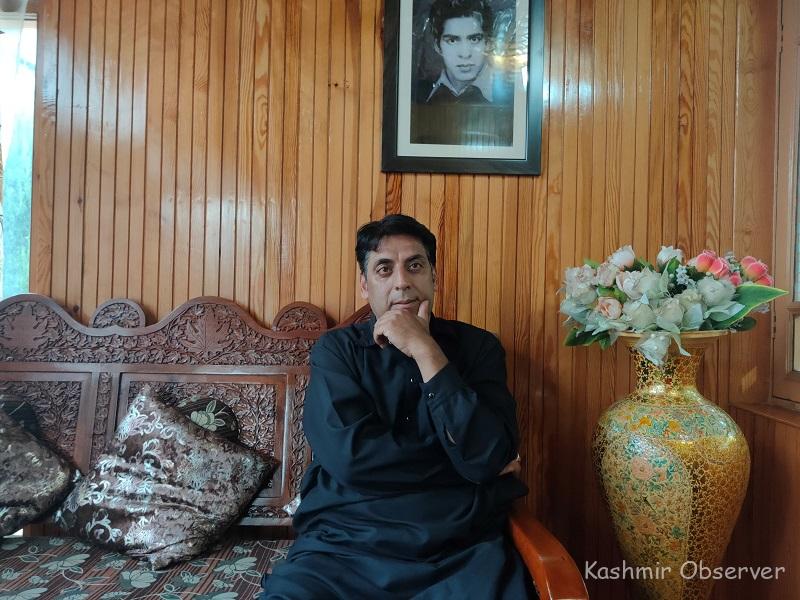
The political unrest and suffering in all these years has greatly impacted Arshad’s work, creating – what he calls – the “atmosphere of sadness” that engulfed his artworks.
“I could not resist drawing turmoil because I was affected by the agony and sadness of the people and I canvassed the crisis,” Arshad says.
But despite brushing the brethren pain, the art scene of Kashmir remains poor, he rues. “Unlike in Kashmir,” he continues, “artists are appreciated in Europe, France, Austria, Germany, Italy, Belgium and USA where an artwork will fetch fifty to hundred times more money than here. Artists can display their works very easily in the West and can be compensated handsomely for it.”
Europeans, Arshad says, purchase an art-piece for a good price. “They need not to be persuaded,” he says. “Similarly, in central Asia, Dubai is a good place for an artist. Similarly, Iran is a center of art and Iranians appreciate art but there are fewer opportunities there.”
Arshad’s paintings are displayed all over European countries and USA. More than thirty of his original paintings and reproductions are at display in private collections there.
“For going global,” Arshad says, “artist should be different and should have individuality so that the people like him.”
But without government intervention, the artist doesn’t seem much hopeful about Kashmir’s artistic future.
“First and foremost we need an art gallery in Srinagar and the government needs to start appreciation courses so that young talent brought forth,” Arshad says.
“The art should become a corporate social responsibility and people should come forward and work for the promotion of Art and Artists in the valley. There should be art exhibitions. If the talent of youth is channelized in a proper manner, we will be able to create great artists.”









